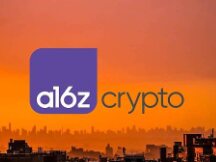Key blockchain and crypto trends in 2022: no expectations
For me, it's a tradition. Blog on future blockchain and crypto trends next year and beyond. A year ago, I wrote the phrase "Always hope for the unthinkable". What was unexpected was the emergence of the DeFi market and the NFT industry. However, more and more banks have always entered the crypto space, and they believe that crypto will continue to exist. What can you bring next year? Here are 15 things I'll explain.
1. New 3rd and 4th generation Blockchain solutions
The first thing we'll look at is the rapid development of new 3rd and 4th generation solutions designed to eliminate speed and scalability issues. 3rd generation blockchain platforms such as Aion, Cardano, and EOS have introduced technologies such as sharding to solve scaling issues, reduce costs, and accelerate business. These platforms also complement the blockchain resources in the app.
There is also a four generation blockchain designed to make it easier to design, operate and rebuild corporate networks and to solve past problems and build trust in the use of goods in a user-friendly way. In addition to easy integration, low costs and excellent performance are designed to provide cutting edge solutions, such as the recognition that not all industries are created the same using different consensus. Take advantage of 4th generation blockchain platforms like Insolar and Aergo using cutting edge interfaces to hide the complexities of core blockchain technology and make network activities easier to use.
2. For more standardization and interoperability of the blockchain
Another difference we'll see in 2022 is the ability to streamline design and integration. This should allow more blockchains to communicate. The number of blockchains and distributed file shares has increased. Most blockchain networks operate within separate ecosystems as they seek solutions to their specific needs. As more and more people keep monitoring new technology and its capabilities, it needs to be part of this new chain.
Design is the key to the success of any technological development, and the blockchain is unique. Setting timely standards for technology development can lead to collaboration, build trust, and simplify the use of technology. In this way, they promote improvement and pave the way for adoption.
The rapid development of the blockchain will give birth to different types of chains. More and more technologies are using cross-chain technology, a new technology designed to change the cost and data of different blockchain networks. This technology has become a hot topic and considered the best solution to improve the integration of blockchains.
3. Blockchain solution as a service (BaaS)
Many advances in these blockchain environments have made BaaS a way to gain acceptance by more and more companies. The demand for blockchain-based (BaaS) services from the industry is steadily increasing and will continue to grow through 2022. These areas include Microsoft, Amazon, and R3.
BaaS enables cloud-based hosting users to use blockchain-related solutions and applications without the hassle or hassle of running applications, and without investing heavily in home remodeling due to a lack of expertise. BaaS employees help clients focus on their core business and blockchain operations.
4. Great demand for Blockchain and Crypto technology
In 2022, the demand for blockchain and encryption technology will increase. The growing potential of the blockchain industry and the growing dominance of blockchains in various industries are the main reasons for the growing demand for this technology. The promise of blockchain technology to businesses in terms of profitability and improved performance, along with the booming cryptocurrency industry, has directly led to the increased demand for blockchain professionals.
A LinkedIn report lists blockchain as one of the most popular technologies after 2021. Therefore, companies need the knowledge of blockchain professionals who can help them use most blockchain technologies to achieve their business goals. for
5. Blockchain-IoT-G5 integration
This year, we have seen a further increase in the integration of blockchain with other technologies such as big data and intelligence. Companies have also increased the use of blockchain for Internet of Things or Internet of Things applications.
The Internet of Things market is growing rapidly and is expected to accelerate in 2022 due to the recent acquisition of 5G networks. However, the demand potential of the 5G IoT market today is limited by the uncertain IoT ecosystem.
Blockchain technology appears to be the most cost effective and cost effective way to solve many 5G IoT challenges. Due to automatic encryption and the inability to switch between blocks, it can help solve many security and scalability issues. We look forward to seeing more early experiences and applications in this area by 2022.
6. Blockchain and metaverse
Another best blockchain model of 2002 is Metaverse's blockchain application. Metaverse is Facebook's most famous past domain with an “immersive” experience in new technologies such as blockchain, augmented reality, and virtual reality. Without the release of blockchain technology, the metaverse would not be complete because everything is stored on the root network.
Blockchain could lead to the emergence of new relationships that will be bigger or better than existing networks such as Facebook, Instagram, Twitter and YouTube, which have now become a communication with the media.
Blockchain in 2022 will run multiple Metaverse platforms using NFTs and cryptocurrencies. Thus, digital assets such as NFTs will define ownership of the metaverse and cryptocurrencies will support new digital businesses. Twitter, which still has a huge user base of 192 million daily active users, is now considering integrating cryptocurrency into its platform, including providing developers with Bitcoin profiles.
7. Blockchain and government
The government is just starting to embark on the blockchain industry. Blockchain offers governments a new way to streamline processes and handle data better. In recent years, governments in some countries have tried to use these new technologies for a variety of purposes and services, including land registration, certification, education and purchasing, nutrition, and self-regulation.
The key to getting in the way of government so far is trust. The World Bank is planning a “three-tier” design and implementation of a framework to prevent failure of the technology and its application goals. Their framework consists of a set of layers, a set of layers, and a set of layers. Social classes engage people in action and social skills such as motivation and encouragement.
The information layer is the list itself and is given in terms of availability, security, reliability and reliability. Technology processes include DLT protocol, data archiving and approval mechanism, etc.
8. Multiple activities of the CBDC
There will be more impacts in 2022, as 80% of the world's average banks explore the digital banking system (CBDC) in 2021, according to information from the International Conference Bank. Governments around the world know that cryptocurrencies will continue to exist, and most CBDCs have indicated that financial services are responsive to consumer needs and do not necessarily eliminate the use of Bitcoin and other crypto. private currencies.
Most banks are still laying the groundwork for the emergence of CBDCs, but already have CBDCs online. However, these are only limited to a few smaller countries including the Bahamas, Cambodia and the Eastern Caribbean, with Nigeria having followed suit in recent years.
As for the developed countries, China and Sweden (e-crown) are in the lead and have led the general experiment. China is expected to attempt to expand its digital yuan (CBDC) during the Winter Olympics in early 2022. This could cause other central banks to comply, including UK, US, Russia , Japan and the European Central Bank.
9. The DeFi market will prosper…
DeFi, or financial management, has become an easy way and does not allow users to directly interact with each other. This year, DeFi assets are worth more than US $ 180 billion, and this figure is expected to increase further by 2022. Depending on the project's physical energy replication demand (such as uniqueness, proof of ownership) Still growing, we will see DeFi's independence in the market and the advent of many dedicated DeFi applications. The continued regulation and acceptance of cryptocurrencies could lead to greater financially or intermediary (CeFi) and financially unfair (DeFi) integration over time.
10. ..... and the NFT
The significant growth of the NFT industry in 2021 is expected to continue through 2022. As almost everything becomes digitalized, there is a growing need to replace physical products, such as many defects, proof of ownership and rare. The previous description of the metaverse will bring many new opportunities for using the new NFT.
Many new applications such as games, music, tickets and SNS broadcasts have entered the NFT market, driven by a wide range of interests and benefits.
However, the risks and problems facing this industry must be mitigated. It is a non-fungible token, which increases the importance of better oversight and legitimacy by international regulators. The results could have far-reaching implications and could determine the future of the NTF. However, it is not clear how this will work.
11. Big banks enter the DeFi market
Banks, especially large ones, are changing their approach to crypto and DeFi. As middle class banks around the world begin to accept the principles of CDBC and financial stability, the principles of DeFi business will be further strengthened by traditional business. The banking industry has started to see and react to DeFi's irreplaceable ability to replace existing processes. Driven by demanding customers and members, more and more banks are finding ways to fix DeFi and cryptocurrency issues. While some celebrities this year have stepped into the DeFi playground to meet consumer demand for encryption, providing more DeFi-based apps, that number will grow further in 2022, with more for the arena. Challenge.
12. You will see more DAOs.
To solve the administrative problems that will come from DeFi organizations, more autonomous organizations or DAOs will emerge after 2022. for
Decisions or controls by DeFi agencies (based on how much they charge users for the products they provide) are typically decentralized. At the basic level of DeFi, one or more people can support business applications from scratch. However, as DeFi plans increase, they often research, shifting control onto the communities that use them.
This change should take the form of independent democratic organizations (DAO). Smart contracts allow holders of these tokens to have a say by establishing rules and regulations in their token scheduling and publishing policies.
13. The number of competitors and cryptobanks will increase.
One innovation we'll see in the years to come is the growth of competitors and crypto banks designed to meet the needs of millennials and Gen Z. Both are looking for new ways to manage their money. This has led to the emergence of competing banks that are totally digitizing finance. But for the Z 25 and less, this is not enough. Saving, making money, and managing your finances are the main differences between Gen Y and Gen Z, and this is where cryptocurrencies start to be discussed.
14. The cryptocurrency exchange rate reaches the real level
Although the demand for cryptocurrency from consumers, businesses and financial institutions continues to grow, the cryptocurrency hype will end in 2022 and the cryptocurrency exchange rate will change, set to day according to future rules and brought back to its actual level. Global (see Trend 15).
Despite the importance of the DeFi and NFT markets, cryptocurrencies could lose some of their magic by 2022. Investors have overestimated the value associated with blockchain technology. Urine has been used extensively. This could negate the excitement of trading larger in the cryptocurrency space.
15. Policies have been decided.
Last but not least, global regulators who have long struggled with various crypto issues will step up their work and come up with self-government and consolidation. The aim is to address the many risks and issues in the crypto industry, including cryptocurrencies, crypto assets, securities, DeFi, NFTs and more, on the one hand, without interfering or cause damage to the promotion.
Although some countries have banned cryptocurrencies altogether, it has become clear to regulators that cryptocurrencies will continue to be researched and regulated within the industry. However, international organizations such as the Bank for International Settlements, the International Monetary Fund (IMF) and the World Bank have sent a message that oversight of international cooperation and surveillance is urgent.
Expect 2022
Hello friends. All of these models are based in certain places. Therefore, the first consideration must play an important role in making these predictions come true. If all of these predictions are correct, 2022 will be a good year for the blockchain and crypto industry. But, as we noted in our models blog for 2021, still expect to be surprised. Develop knowledge.

Scan QR code with WeChat






























